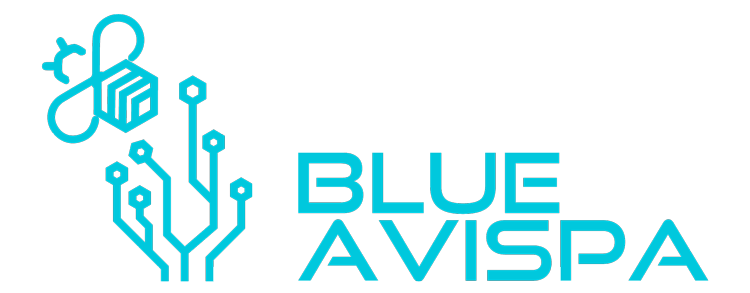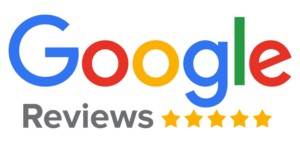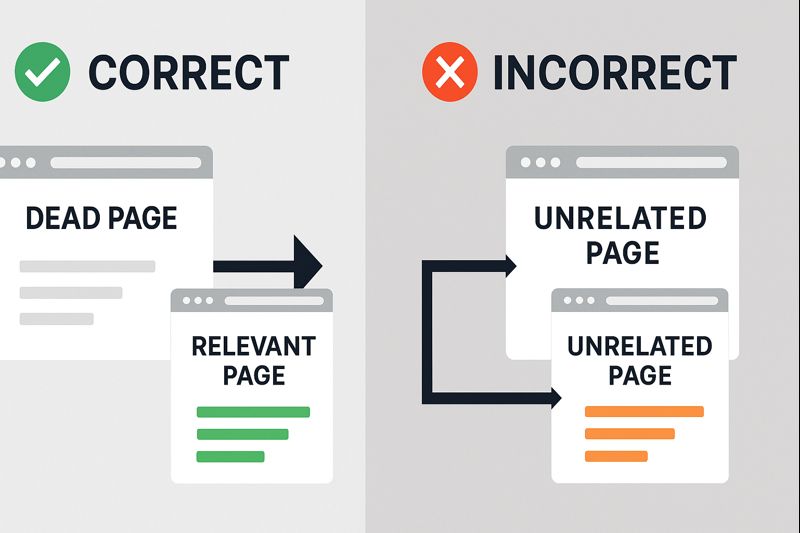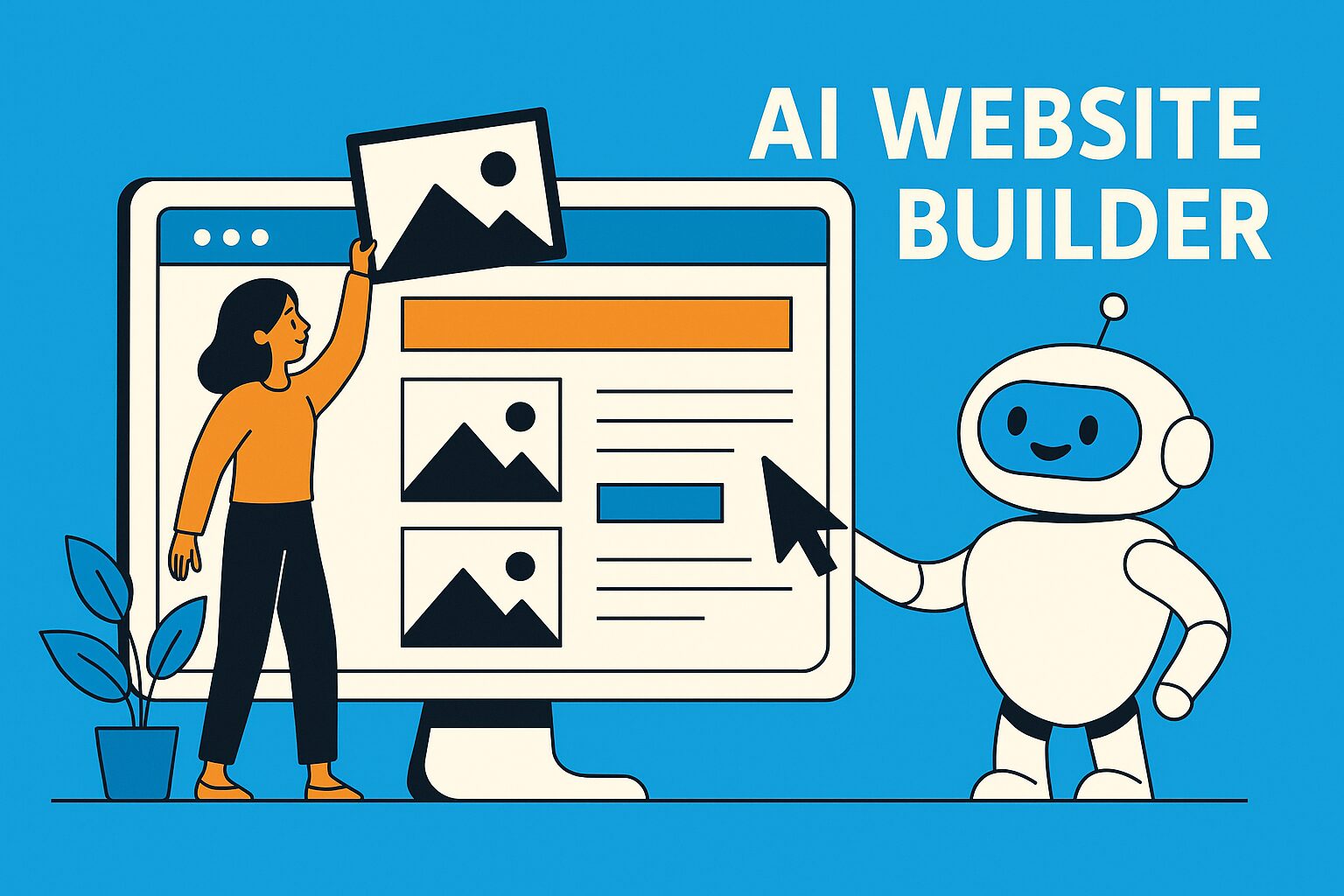ROI of a High-Functioning Website vs a Old Low-Functioning Website
This is for small, medium and medium-large companies. Large Corporations require a little more math. Contact us for details.
A business’s website isn’t just a digital brochure – it can be a revenue-generating asset when done right. A high-performing, well-maintained site can drive significantly more traffic, convert more visitors into customers, and ultimately deliver a strong return on investment (ROI) compared to a poorly maintained site. In this analysis, we’ll compare a “low-functioning” website (outdated design, minimal SEO & content, slow load times) with a “high-functioning” website (modern, optimized, fast, SEO Content and structure) in terms of traffic, conversion, costs, five-year returns, and overall asset value. We’ll use examples from three sectors – a home services company, an industrial firm, and a local local service provider – to illustrate the differences in real numbers.
Context
The numbers above represent extreme ends of the spectrum—situations I see often though. On one side are template or single-page “set-it-and-forget-it” sites (usually built on do-it-yourself platforms like Wix) that have been untouched for years; on the other are fully optimized, slightly expanded on (adding maybe 5-10 pages), professionally maintained sites.
Most websites land somewhere in the middle. They can ultimately reach a similar long-term ROI, though their starting point is rarely as low as the “ignored” examples here.
Figures are abstracted ballparks compiled from a decade of client projects, blended with ChatGPT-assisted analysis and explanation. I’ve rounded numbers and removed identifying details to protect client privacy. The profits are based on general industry standards and do not directly reflect any clients actual income. This is again to detach from any real client data. The traffic estimates are fairly accurate though (I rounded down a bit to be on the safe side). I’ve certainly seen 6-10x the traffic on some sites. Some double year after year for 2-3 years then level out for a bit. But for you, I think these are safe numbers to use.
The conversion rates are assumptions based on industry research. I don’t work directly with clients on tracking their income, however, the info on conversions and costs are relatively accurate based on research from each industry. You may insert your own income and expenses there for more customized results that may more accurately reflect your potential profits.
FOR SALES: Remember, a website can fill your calendar with inquiries, but if you—or your team—lack basic sales technique, you can still lose the leads. Likewise, ROI depends on having at least one differentiator (location, niche service, unique offering). In hyper-competitive markets with no clear niche, gains will be smaller—though still better than leaving an under-performing site online.
This guidance is aimed at owners who’ve ignored their site for years or hired agencies that sell hard but lack deep web expertise. If that sounds familiar, these examples show what’s possible when a specialist puts the right foundation in place.
Return on Investment — How Big Is the Pay-off?
Below is a clear range for the percentage ROI you can expect once a new, fully optimised site has had six months to reach full ranking strength.
We show two time-frames—Year 1 and a Five-Year horizon—and compare a DIY/legacy build with a professional rebuild.
| Business type | Up-front cost old DIY | Up-front cost new pro | Year-1 net profitold site | Year-1 net profitnew site | ROI old (%)* | ROI new (%)* |
|---|---|---|---|---|---|---|
| Home services | $5 000 | $7 500 | $36 000 | $151 000 | +620 % | +1 913 % |
| Industrial services | $500 | $7 500 | $10 000 | $150 000 | +1 900 % | +1 900 % |
| Local service provider | $1 500 | $7 500 | $19 000 | $58 000 | +1 167 % | +673 % |
* ROI % = (Net profit − Build cost) ÷ Build cost
What the numbers mean
- Year-1 ROI now spans roughly +620 % to +1 900 %—even after allowing six months for Google to settle.
- Five-year ROI (see later tables) explodes to +3 800 % to 10 000 % because profits repeat while the build fee is paid only once.
In plain English: every dollar invested in a high-functioning website returns about $38 to $100 over five years in these real-world scenarios—turning a “cost” into a powerful profit engine.
Higher Traffic and Visibility (More Clicks = More Leads)
One of the immediate benefits of a high-functioning website is increased traffic from search engines and other sources. A better site often means better content and SEO, which translates to higher rankings on Google and more impressions turning into clicks. By contrast, a low-quality site might rank poorly, missing out on potential visitors. For example, a home services company’s outdated site was appearing in thousands of Google searches per month for valuable keywords, but because it ranked on page 8 of results, almost no one clicked through – the key phrase saw over 6,000 impressions in 28 days, yet only 4 clicks (CTR 0.06 %) when the site was around 79th position. A redesigned, optimized site that ranks on page 1 for those terms could capture a much larger share of that search traffic. In fact, it’s not uncommon for a website redesign with SEO to double or triple a site’s traffic – for instance, one website’s traffic tripled after a site refresh.
Table 1: Annual Website Traffic and Profit – Low vs High Functioning Site
| Industry | Annual Visits (Old Site) | Annual Visits (Improved Site) | Annual Profit from Website (Old) | Annual Profit from Website (New) |
|---|---|---|---|---|
| Home Services 🏠 | ~1,440 (about 120/mo) | ~4,320 (about 360/mo) | ~$36,000 (36 jobs × $1K profit each) | ~$106,000 (106 jobs × $1K each) |
| Industrial Services ⚙️ | ~15 (very low traffic) | ~360 (1 click/day) | ~$10,000 (1 sale × $10K profit) | ~$150,000 (15 sales × $10K each) |
| Service Provider 💼 | ~2,400 (200 visits/mo) | ~4,800 (400 visits/mo) | ~$19,000 (48 clients × $400 profit) | ~$58,000 (144 clients × $400 each) |
Assumptions: “Old” site conversion rate to paying customer is held constant for fairness (e.g. 2.5 % of home services visitors become jobs, 1 % for industrial, 2 % for service provider). Profit per conversion varies by industry (home services ~$1K profit per job, industrial ~$10K per contract, service provider ~$400 profit per client).
As Table 1 shows, simply by attracting more visitors, the high-functioning website dramatically increases the annual profits. In our home services example, the improved site brings in roughly 3× the traffic of the old site, translating to about $70,000 more profit per year just from the extra leads. The industrial services firm’s site, which previously got virtually no organic traffic, could start generating around $150,000 in additional yearly profit. The service provider’s improved site (with about 2× the traffic) might earn roughly $39,000 more per year than before. These gains are solely from traffic-volume increase, using the same conversion rates as the old site.
➡️ Payback from Traffic Gains: Even with just the traffic boost, the ROI is evident. For instance, if a new website costs ~$7,500, the home services company above would recoup that investment in around 2–3 months from the extra $70K/year in business. The service provider’s site would pay for itself in about 4 months from ~$39K/year additional profit. The industrial services firm’s new site, yielding ~$140K more per year, would cover a $7.5K cost in quickly. In contrast, a very cheap “do-nothing” website might have been built for, say, $1,000 – which one or two sales likely paid off long ago, but its low performance means it’s leaving tens of thousands on the table every year.
Improved Conversion Rates (Turning More Visitors into Customers)
A high-functioning website doesn’t just bring in more visitors – it converts a higher percentage of them into leads or paying customers. Factors like faster load times, mobile-friendly design, intuitive navigation, and professional aesthetics build trust and reduce friction for the user. In fact, about 75 % of users judge a business’s credibility by the quality of its website design. A modern, credible-looking site with clear calls-to-action will persuade more visitors to contact you or make a purchase, compared to a clunky, outdated site. Additionally, improved performance can make a huge difference: studies show that if a page loads in ~2 seconds it sees about a 1.9 % conversion rate, but at 4+ seconds conversion drops below 1 %. In one case, Walmart found that for every 1-second improvement in page load time, conversions increased 2 %. Speed, usability, and design all contribute to higher conversion rates.
Let’s say our new website not only gets more traffic, but also converts visitors moderately better than the old one (without over-promising). Perhaps the home services site had an effective conversion-to-customer rate of ~2.5 % and we improve it to ~3.5 % with the redesign (thanks to faster speed and a more trustworthy design). The industrial services site might go from about 1 % to 1.5 %, and the service provider from 2 % to 3 %. Those are realistic, conservative bumps given the improvements in user experience and SEO targeting. Here’s how that impacts the bottom line:
- Home Services: Raising conversion from 2.5 % to 3.5 % means the improved site now yields about 148 jobs/year instead of 106 at the higher traffic level – that’s ~$148,000/yr in profit vs. ~$106,000 before. This ~40 % increase in conversion boosts annual profit by another $42K, cutting the payback time down to mere weeks.
- Industrial Services: Conversion going from 1 % to 1.5 % on the increased traffic means roughly 7.5 contracts/year instead of 15 – about $225,000/yr profit instead of $150K.
- Service Provider: Conversion from 2 % to 3 % on the doubled traffic means around 144 new clients/year instead of 96, translating to ~$57,600/yr profit vs ~$38,400. That’s 50 % more profit just by converting more of the visitors you already get.
In short, a high-functioning website not only drives more eyes to your business, but also ensures a larger share of those eyes turn into dollars. Better design and UX instill trust, and improved speed and calls-to-action reduce bounce rates and hesitation. The result is a multiplicative effect on ROI: you get more visitors, and you get more out of each visitor.
➡️ Persuasive Example: Imagine two stores in a mall – one has huge foot traffic but a cluttered, unappealing interior, while the other has moderate traffic but a great layout and helpful staff. Now imagine combining the two: high foot traffic and high sales-conversion rate. That’s what a well-crafted website accomplishes for your business.
Below we apply a moderate/conservative conversion bump:
| Industry | Conversion Rate Old % | Conversion Rate Improved % | Leads/Year Base | Leads/Year Improved | Profit/Year Base | Profit/Year Improved |
|---|---|---|---|---|---|---|
| Home services | 2.5 | 3.5 | 108 | 151 | $108 k | $151 k |
| Industrial services | 1 | 1.5 | 15 | 22 | $150 k | $225 k |
| Service provider | 2 | 3 | 96 | 144 | $38 k | $58 k |
The extra profit slashes pay-back to just weeks for all three examples.
The extra profit slashes pay-back to just weeks for all three examples.
Costs of a High-Functioning Website (and Why It’s Worth It)
It’s true that building and maintaining a high-quality website requires a greater investment upfront and ongoing, compared to a “barebones” web presence. Let’s break down the typical costs:
- Initial Development: A custom, professionally designed website for a small business can cost anywhere from a few thousand dollars to the high five figures, depending on complexity. For our purposes, let’s say a top-notch small-business site runs around $6,000–$9,000. (In fact, industry averages put a basic professional website at about $6,000, whereas DIY or template sites might be much less.)
- Hosting & Security: A low-end site might spend $5–10/month on shared hosting ($60/yr), whereas a high-performing site might use faster, reliable hosting, say $20–$50/month (~$300/yr) for a business-class plan. SSL security certificates are often free or <$100/yr nowadays, but let’s assume both sites have basic security in place (no major cost difference there).
- Maintenance & Updates: An oft-overlooked cost is keeping the site updated, secure, and fresh. A “neglected” site might have near $0 in formal maintenance (aside from maybe the owner’s time updating content occasionally). In contrast, a well-maintained site might involve a maintenance plan or retainer with a web developer or agency. This could be on the order of $500–$1,000 per year for a small business website – covering tasks like software updates, backups, minor edits, and uptime monitoring. This maintenance is critical for longevity and security (preventing issues that could cost you far more in lost business if the site breaks or gets hacked).
- Content & Marketing (Optional): To fully capitalize on a great site, many businesses invest in ongoing content creation, SEO, or marketing. For example, you might budget a few hundred dollars a month for blog posts, search engine optimization, or social media management. Let’s say $200/month ($2,400/yr) for a modest content marketing effort to keep your site ranking and engaging – this is optional but can amplify the ROI even more by driving continuous growth in traffic.
Now, adding those up, the annual upkeep of a high-functioning site might be in the ~$1,000–$3,000 range (hosting + maintenance, plus maybe content) versus perhaps ~$100 for a do-nothing site. That’s an extra ~$900–$2,900 expense per year. However, when you compare it to the tens of thousands in extra revenue the site is generating, it’s a drop in the bucket. For instance, spending $1,500 a year to maintain your site pales next to an extra $50,000 a year in business – it’s like paying 3 % of the revenue to secure the other 97 %. In other words, the costs are quickly eclipsed by the gains.
Crucially, a high-quality website also has a longer useful life. You won’t need to rebuild it from scratch as frequently. A poorly designed site might start losing its effectiveness within 1–2 years, forcing another overhaul (and surprise costs) just to catch up. By contrast, a well-built site should serve you for 5 years or more with incremental tweaks. This longer lifespan effectively doubles the ROI of the investment (just as a car that lasts 10 years gives you far more value than one that breaks down after 5). As one web ROI expert put it: “A great site will produce results for five years or more… whereas a poorly designed site will need a full redesign in two years or less.” In short, investing more upfront (and on maintenance) actually saves money long-term and keeps the revenue flowing.
➡️ Bottom Line on Costs: The high-functioning website does cost more to create and run – perhaps a few thousand upfront and a thousand or two per year extra in services. But its payback period remains extremely short because of the vastly higher income it drives. Both the home services and local business examples we used would still see their new site pay for itself in well under a year even after factoring in, say, $1K/year maintenance fees. The additional annual maintenance cost might extend the payback by only a month or two, which is well worth the trade-off for stability and performance. In contrast, skimping on your website budget might save a little money now but cost you far more in lost opportunities, and you may end up paying for a rushed redesign sooner anyway.
Cost Item Comparison
| Cost Item | Low-Functioning Site (typical) | High-Functioning Site (typical) |
|---|---|---|
| Initial build | $1 000 | $6 000 – $9 000 |
| Hosting (yr) | $60 | $540 (home svc) $300 (pro) $60 (ind.) |
| Maintenance (yr) | $0–$100 | $1 020 |
| Optional content* | $0 | $2 400 – $7 200 |
*1–3 SEO posts / mo at $100–$300 each.
Even with the higher upkeep, the new site’s yearly profit lift (≥ $20 k – $100 k) dwarfs its $1 – 3 k annual operating cost. Old “cheap” sites, meanwhile, often need a full rebuild every 2 years—erasing the apparent savings.
Five-Year Revenue Projection: Old vs New Site
To truly appreciate the ROI, we should look at the long-term gains. Let’s project the cumulative income from the website over a five-year period. We’ll assume the improved site achieves its new higher traffic and conversion within the first year and then “levels off” (in reality it might continue growing with good marketing, but we’ll be conservative and hold it steady). For the old low-performing site, we’ll assume its results would have stayed roughly flat (in reality it might decline further as competitors improve, but again, conservatively assume it just keeps chugging at the same low level).
Table 2: Five-Year Cumulative Profit from Website Leads (High-functioning site vs. low-functioning site)
| Industry | Annual Profit (New Site) | 5-Yr Profit (New) | 5-Yr Profit (Old) | Extra 5-Yr Profit |
|---|---|---|---|---|
| Home services | $151 k | $755 k | $180 k | +$575 k |
| Industrial | $150 k | $750 k | $50 k | +$700 k |
| Professional | $58 k | $288 k | $96 k | +$192 k |
Even after subtracting the one-time development cost and a few years of maintenance fees from the “High-Functioning” side, the gap is enormous. The home services business stands to make over half a million dollars more in five years with a quality website than it would with the old site. The industrial firm could net an extra $200K, and the clinic nearly $200K as well. These numbers highlight why a website should be viewed as an investment with compounding returns. Each year, the good site keeps bringing in revenue, whereas the bad site leaves money on the table year after year. Over five years (or ten), that cumulative difference can easily exceed the entire cost of the business’s other investments. And remember, we assumed flat performance after the initial jump – if you continue to optimize content or if positive word-of-mouth (and backlinks, etc.) drive more growth, the high-performing site’s results could climb further over time.
It’s also worth noting the opportunity cost: sticking with a poor website is essentially “losing” those hundreds of thousands in potential revenue over the long run. When you frame it that way, the question shifts from “Can we afford a better website?” to “Can we afford NOT to upgrade our website?”
The Website as an Asset (Not Just an Expense)
5 · Website as an Asset
| Industry | Annual Profit (New Site) | Valuation at 3× | Net Asset Gain vs Old Site |
|---|---|---|---|
| Home services | $151 k | $453 k | ≈ +$300 k |
| Industrial | $150 k | $450 k | ≈ +$300 k |
| Professional | $58 k | $174 k | ≈ +$120 k |
Buyers value reliable lead engines. At a conservative 3 × annual profit, the upgraded websites add six-figure equity to each business—far beyond their build costs.
Beyond the immediate revenue numbers, a high-functioning website adds tangible equity value to your business. It’s not merely a marketing expense for one year – it’s a durable asset that yields returns over multiple years. In the same way that a rental property produces rental income, your website produces lead and sales income. This means two things:
- Ongoing Return: If your new site generates, say, $100,000 in extra profit every year, that’s like an investment yielding that amount annually. For perspective, to get $100K per year from a relatively safe investment yielding 5 %, you’d need $2 million in capital. Even at a 10 % high-return investment, that’s equivalent to a $1 million asset working for you. In this light, spending ~$7K on a website that effectively produces a ~$100K/year stream is an incredible bargain – an almost unmatched ROI in terms of capital leverage. The website is working like a machine that turns a small upfront cost into a large ongoing payout.
Value of a Website as an Asset
Business Valuation: When it comes time to sell or valuate your business, the revenue generated via your website boosts the overall company value. Buyers and investors love a reliable customer acquisition channel. Websites (or online businesses) are often valued at a multiple of their annual earnings, commonly in the range of 2× to 4× annual profit (depending on stability and growth). If your improved website is bringing in $150K of profit each year, that could add roughly $300–600K to what someone is willing to pay for your company. In contrast, a weak website that generates little business adds virtually no value – or worse, a poorly done site could even detract from the company’s perceived value due to credibility issues. In essence, a great website not only boosts short-term sales but also becomes part of the goodwill and intangible assets of the business.
In our examples, the high-functioning websites turned into major assets. The home services site producing ~$148K/year in profit is like having an extra revenue stream worth nearly three-quarters of a million dollars over 5 years. The industrial company’s site, while more modest in traffic, could still be viewed as a valuable B2B lead engine that adds a few hundred thousand in business value. The local service website essentially functions like a permanent referral source that brings in dozens of new clients every month – effectively, it’s as if they had a marketing fund generating $40K+ per year on autopilot.
Time to Pay Off the New Website (with a 6-month “ranking-stabilization” ramp-up)
Search engines rarely deliver full results on day 1. A realistic model is:
- Ramp period (first 6 months). Extra profit grows roughly linearly from $0 to the full “Δ” as Google indexes and rankings climb. Average incremental profit during this half-year ≈ ½ Δ → cumulative ¼ Δ.
- Steady state (months 7-12). Site now earns the full incremental profit (Δ) at ≈ Δ ⁄ 12 per month.
Using that ramp, the cumulative extra profit after t months is
Profit_t = Δt² / 144 (0 ≤ t ≤ 6) then Profit₆ + (Δ / 12)(t − 6).
Table 6 – Pay-back Timeline (build $6 k vs $9 k)
| Industry | Δ = Extra Annual Profit | Build Cost | Profit in First 6 mo (¼ Δ) | Month Pay-off Hit |
|---|---|---|---|---|
| Home services | $115 k | $6 k | $28.8 k | ≈ 2.7 mo |
| $9 k | $28.8 k | ≈ 3.1 mo | ||
| Industrial | $40 k | $6 k | $10.0 k | ≈ 4.6 mo |
| $9 k | $10.0 k | ≈ 5.7 mo | ||
| Professional | $38.6 k | $6 k | $9.6 k | ≈ 4.7 mo |
| $9 k | $9.6 k | ≈ 5.8 mo |
How to read the table
- Δ – the extra yearly profit once rankings settle (Section 2).
- Pay-off month – when cumulative extra profit equals the build cost, assuming profit ramps up line-arly over the first six months.
- Surplus after 12 months – extra profit left over after subtracting the build cost in Year 1 (maintenance/hosting excluded because they are tiny vs gains).
What this means
- Even the $9 k premium build is earned back inside the six-month ramp for every example.
- By the end of Year 1 the site has already produced $20 k – $80 k in net extra profit beyond its cost.
- Years 2-5 (steady state) deliver the full Δ each year, compounding the ROI exactly as shown in the five-year table.
Take-away: Allowing six months for Google to settle still leaves a very short pay-back window—measured in weeks or a few months—followed by years of pure profit.
Conclusion: Investing in a high-functioning website yields a compounded ROI through increased traffic, higher conversion rates, and extended longevity. Over a span of years, the revenue gains vastly outweigh the costs, and the website itself becomes a core asset for the business. Meanwhile, a low-functioning, poorly maintained site may save a bit of money upfront, but it costs far more in lost revenue and opportunities* – and often needs replacement sooner, erasing the initial “savings.” In today’s digital-heavy market, your website is often the first (and strongest) impression of your business. Making it fast, user-friendly, and persuasive isn’t just a nice-to-have; it directly translates into dollars and cents. As the data and examples illustrate, a high-quality website can pay for itself many times over, and doing it right is one of the best investments a small business can make in its future growth.




